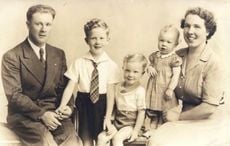Patti Smith is a rocker, poet and memoirist and, having read her memoir "Just Kids," I can also tell you she is Irish -- in ancestry at least. She grew up in Germantown, Pennsylvania, and her family was poor; she tells how as a child she would play games with her siblings, taking the roles of Catholic against Protestant.
"We fought the wars of our Irish grandfathers, the orange and the green. We wore the orange yet knew nothing of its meaning. They were simply colors."
When Smith moved to New York, aged 20, she was homeless and a little lost. Soon, however, she found a partner-in-crime, Robert Mapplethorope. He too, was of Irish-English heritage, from a devout Roman Catholic family.
Smith, whose mother was a Jehovah's Witness, famously proclaimed on her first album that "Jesus died for somebody's sins but not mine." Mapplethorpe's mother had wanted him to be a priest, and he struggled to come to terms with his homosexuality. His response to Catholicism was even more extreme.
Smith says, "His dual nature troubled me, mostly because I feared it troubled him. When we first met his work reflected a belief in God as universal love. Somehow he got off track.... He had broken from the Church, now it was breaking within him."
Mapplethorpe went on to create disturbing and extreme images, which were sexually obscene and often visually beautiful.
He isn't the only artist to have a troubled but creatively fruitful relationship with the Church: James Joyce is another (Have you read "The Portrait of the Artist as a Young Man" recently?).
The Catholic Church abuses hardly need extra discussion here, they were terrible indeed. Yesterday, though, Irishcentral's publisher Niall O'Dowd wrote about the good works the Church has done.
Perhaps there will come a time when we'll acknowledge the Church's positive side -- not just in the form of the kindly priests and nuns who did work within it; but also in the inspiration it gave to our artists.
If nothing else it gave them something to rebel against.




Comments